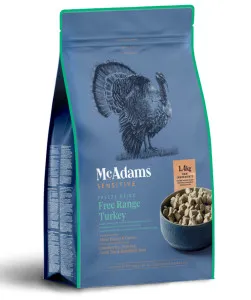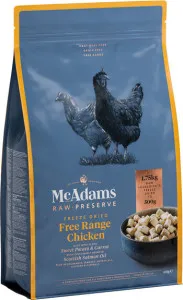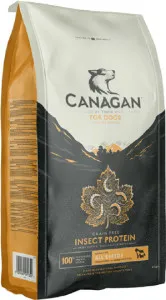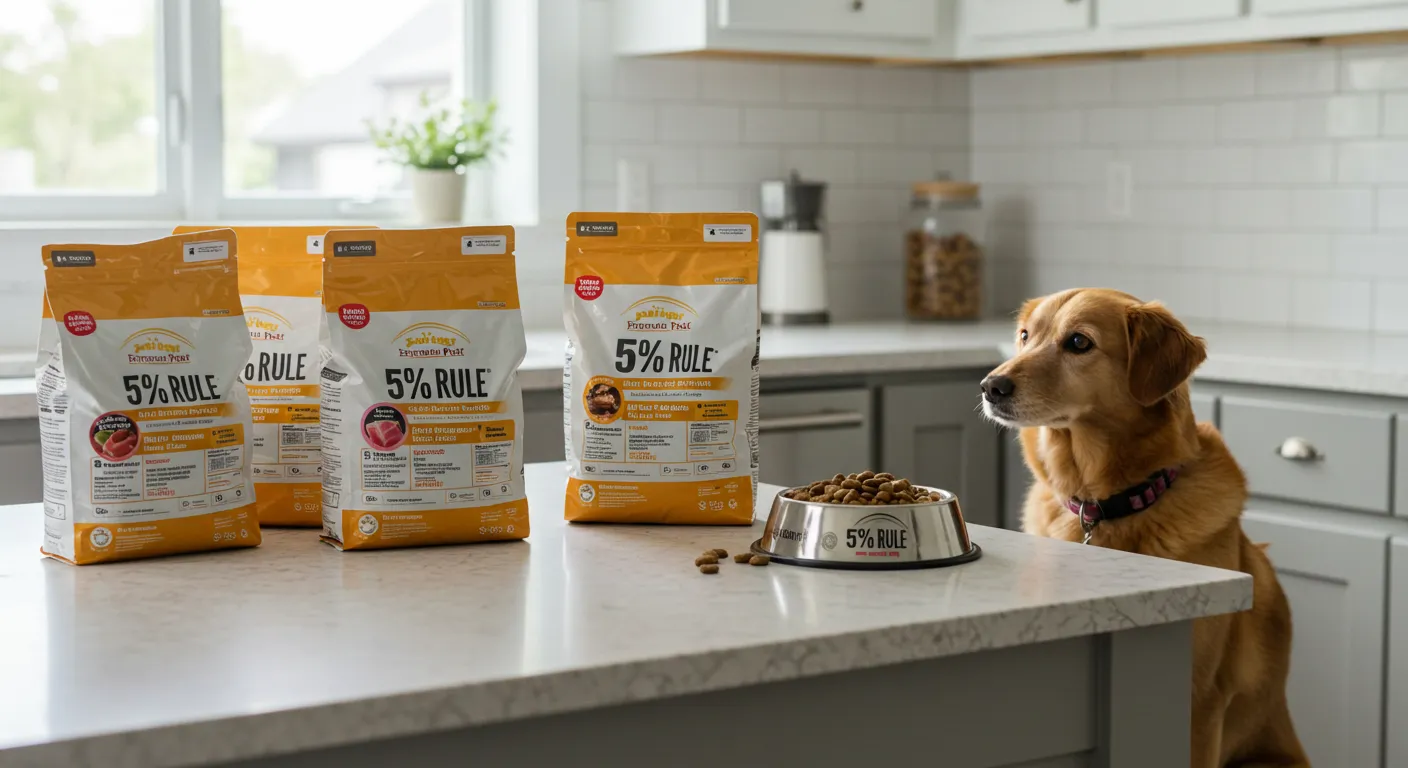What Is the 5% Rule in Dog Food? A Simple Guide for Pet Owners
The 5% rule in dog food means that if an ingredient makes up less than 5% of the total product, manufacturers aren’t required to list its exact percentage on the label. This rule allows pet food companies to group minor ingredients (like vitamins or flavorings) without specifying how much is included—which can sometimes hide low-quality fillers or additives. If you want to ensure your dog gets the best nutrition, always check the first few ingredients and use tools like our Pet Food Analyzer for a deeper breakdown.
Why Does the 5% Rule Exist?
The 5% rule was created by the Association of American Feed Control Officials (AAFCO) to simplify pet food labeling. Since tiny amounts of certain ingredients (like preservatives or trace minerals) don’t significantly impact the overall formula, AAFCO allows brands to list them without exact measurements. However, this flexibility can sometimes be misused by companies to mask less desirable ingredients.
How the 5% Rule Affects Dog Food Quality
While the rule itself isn’t inherently bad, it can lead to vague labeling. For example:
- Hidden fillers: A food might list "natural flavors" without revealing if they come from meat or cheap by-products.
- Undisclosed additives: Artificial colors or preservatives could be present in small amounts but not clearly stated.
- Misleading marketing: A brand may highlight "with blueberries" on the package, but the actual content could be as low as 1%.
- Look for vague terms: Phrases like "animal digest," "meal," or "flavors" often hide under the 5% threshold.
- Check the end of the list: Ingredients after salt (usually around 1% or less) are almost certainly below 5%.
- Watch for ingredient splitting: Some brands split similar ingredients (e.g., "peas, pea protein, pea flour") to push them lower on the list.
- Chicken (25%)
- Brown rice (20%)
- Peas (15%)
- Chicken meal (10%)
- Potatoes (8%)
- Flaxseed (4%)
- Natural flavors (exact % not disclosed)
- Vitamins & minerals (exact % not disclosed)
- Allergens: Even 1% of an allergen (like corn or soy) can trigger reactions in sensitive dogs.
- Nutritional balance: Synthetic vitamins and minerals must be precise—too little or too much can cause deficiencies or toxicity.
- Quality concerns: Low-cost fillers (like cellulose) might be hiding under the 5% threshold.
- Added vitamins/minerals
- Artificial preservatives (e.g., BHA, BHT)
- Ingredients flagged as controversial (e.g., carrageenan)
- Prioritize named proteins: Look for "chicken," "beef," or "salmon" as the first ingredient—not generic "meat."
- Avoid mystery ingredients: Steer clear of terms like "by-products" or "animal digest."
- Use our Pet Food Analyzer : Get instant clarity on what’s really in your dog’s food.
- "Flavors" without a source (e.g., "chicken flavor" vs. real chicken)
- Multiple carbohydrate sources split to appear lower on the list
- Artificial colors (often unnecessary and potentially harmful)
How to Spot the 5% Rule in Ingredient Lists
Ingredients on dog food labels are listed by weight before processing , with the heaviest items first. Here’s how to identify potential 5% loopholes:
Example: Decoding a Dog Food Label
Here’s a sample ingredient list with the 5% rule in action:
In this case, flaxseed is likely just under 5%, while "natural flavors" and vitamins could be far less.
Recommended Products

McAdams Freeze Dried Free Range Turkey is an excellent choice for what is the 5% rule in dog food?. This dog food contains Boneless Free Range Turkey 86.5% and other high-quality ingredients that promote overall health.

McAdams Freeze Dried Free Range Chicken is an excellent choice for what is the 5% rule in dog food?. This dog food contains Boneless Free Range Chicken 86% and other high-quality ingredients that promote overall health.

Canagan Insect is an excellent choice for what is the 5% rule in dog food?. This dog food contains Freshly Prepared Insects (27%)* and other high-quality ingredients that promote overall health.
Why the 5% Rule Matters for Your Dog’s Health
While minor ingredients might seem insignificant, they can add up—especially for dogs with allergies or sensitivities. For example:
Special Cases: When the 5% Rule Doesn’t Apply
Some ingredients must be listed regardless of percentage:
How to Choose the Best Dog Food Despite the 5% Rule
Don’t let vague labeling trick you! Follow these tips to pick a high-quality dog food:
Red Flags in Dog Food Labels
Watch out for these signs of low-quality ingredients:
Final Thoughts: Be a Smarter Pet Owner
The 5% rule in dog food isn’t necessarily bad—it’s just a reminder to read labels carefully. By focusing on the first five ingredients and avoiding vague terms, you can ensure your dog gets nutritious meals without hidden fillers. For an easy way to analyze any dog food brand, try our free Pet Food Analyzer today!
